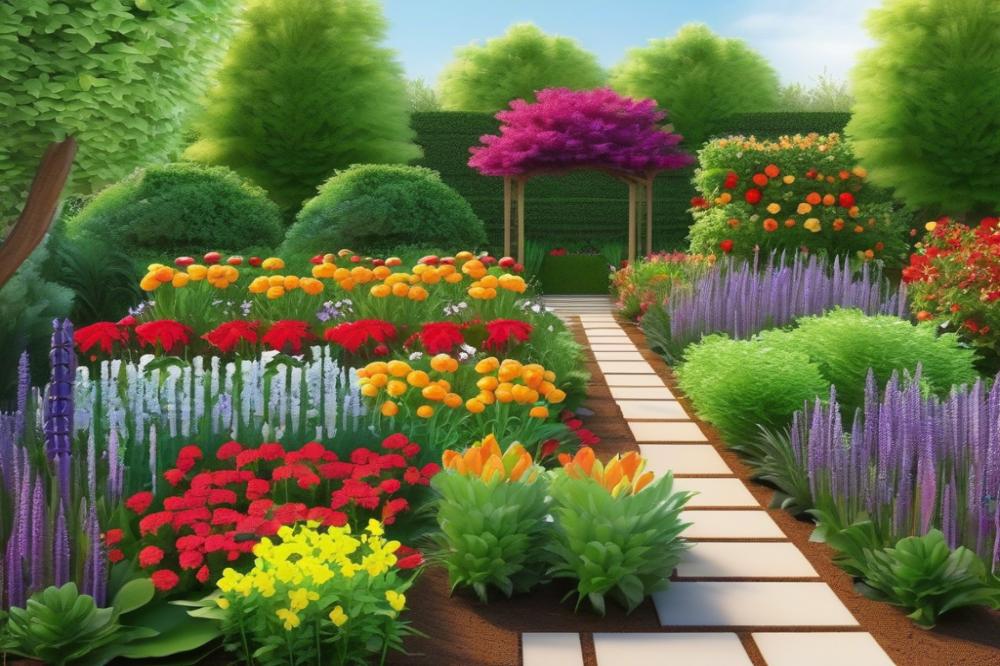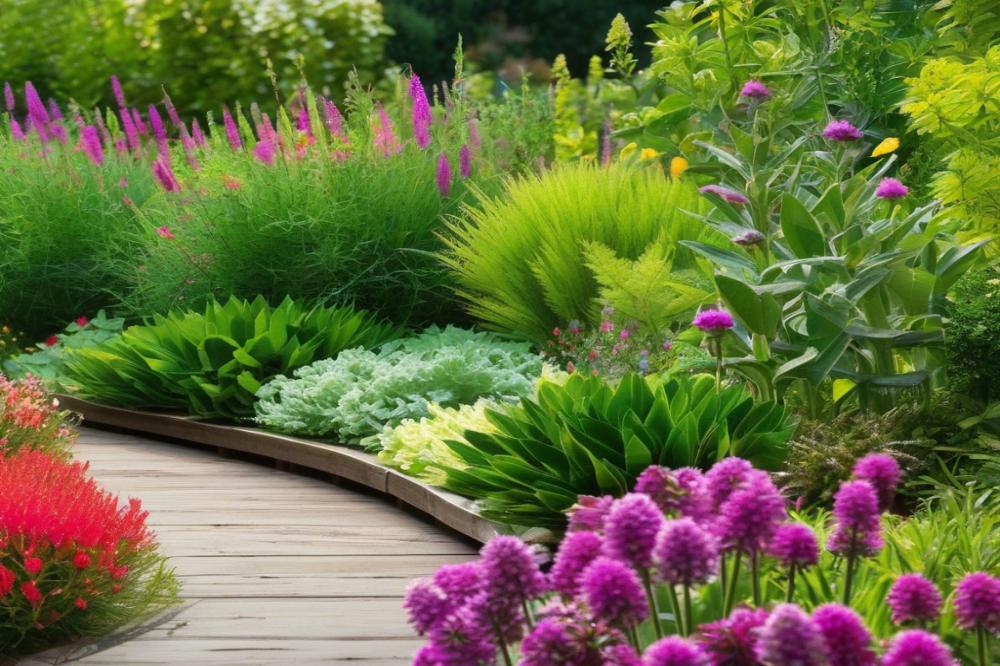Introduction
In the world of gardening, natural pest control plays a crucial role in maintaining plant health. Healthy plants are more resilient against harmful insects and diseases. When plants are too close together, they can create an environment that fosters the growth of pests. overcrowding can harm soil health and restrict airflow, making it easier for various plant diseases to take hold.
Maintaining proper plant spacing is essential to support healthy growth. Each plant needs room to thrive, absorb sunlight, and access nutrients in the soil. Along with good spacing, practices such as crop rotation and companion planting can enhance biodiversity. A diverse garden encourages beneficial insects that can aid in pest control, ultimately leading to a balanced ecosystem.
Two fundamental issues arise when plants are crammed into a small area. First, competition for resources becomes fierce. When plants struggle to survive, they may become weak and more vulnerable to attacks from pests. Second, overcrowding can lead to increased humidity, creating a perfect breeding ground for unwanted insects and diseases.
By embracing a mindful approach to garden design, gardeners can promote a thriving ecosystem. Adequate space between plants not only helps with pest prevention but also encourages robust plant growth. A well-planned garden allows sunlight to penetrate and air to circulate freely, reducing dependence on chemical pesticides.
When plants are given the right amount of room to flourish, they are better equipped to resist threats from pests. Incorporating principles of biodiversity and healthy soil management can lead to successful gardening outcomes. In summary, avoiding overcrowding is vital for promoting a healthy garden, fostering beneficial insect life, and ultimately ensuring the vibrancy of the entire ecosystem.
Understanding Overcrowding
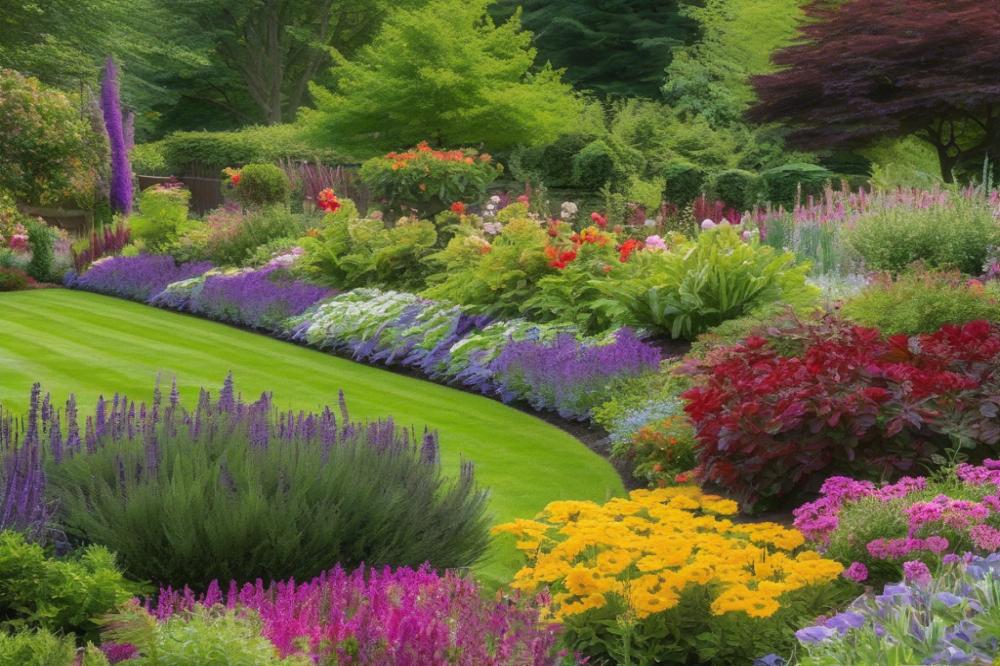

In the context of planting and garden design, overcrowding refers to the situation where plants are spaced too closely together. This improper plant spacing can lead to a range of issues as plants compete for essential resources. Each plant requires nutrients, water, and sunlight to thrive. When they are too close, these resources become limited.
Soil health is particularly affected in crowded spaces. Over time, the soil can become depleted as multiple plants draw from the same supply without giving it a chance to recover. The result is weakened soil that struggles to support adequate plant growth. A healthy ecosystem relies on balanced interactions, and overcrowding disrupts these dynamics.
Furthermore, high plant density can increase the susceptibility to pest control challenges. When plants are crammed together, there is less air circulation. This creates a damp environment that is welcoming to various plant diseases. Pests often find it easier to invade and spread through densely packed crops.
Biodiversity plays a critical role in garden health. By utilizing practices such as companion planting and crop rotation, you can promote a wider variety of plants. A mix of species not only enhances the visual appeal of your garden but also strengthens its defenses against pests and diseases.
In summary, managing space in your garden is not just about aesthetics. Effective plant spacing fosters a healthier environment where plants can flourish. When plants have room to grow, they develop deeper roots, healthier leaves, and a stronger immune system. Ultimately, avoiding overcrowding contributes to a thriving garden that is resilient to pests and plant diseases.
Impact on soil health
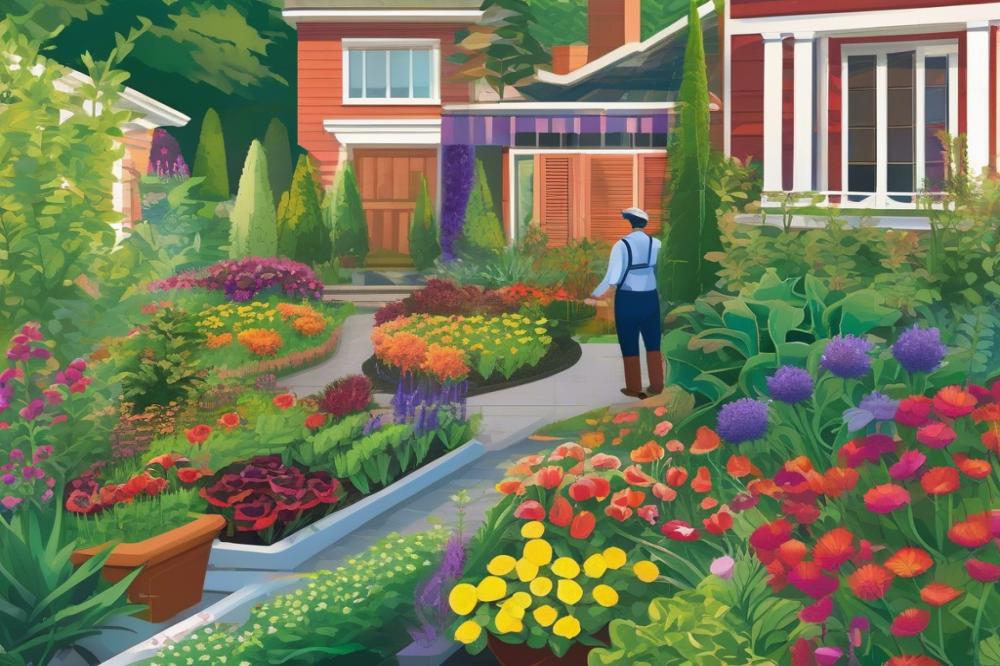

Plant spacing plays a crucial role in maintaining soil health. When plants are too close together, soil aeration suffers. Dense plantings can lead to compacted soil, preventing air from reaching the roots. This situation hinders crucial biological processes that keep soil alive. In turn, oxygen-deprived soil struggles to support healthy plant growth.
Nutrient depletion occurs more rapidly in overcrowded plots. As plants compete for limited resources, they drain the soil’s nutrients faster than it can replenish them. When diverse plants are spaced properly, however, they can share the load. Practices like crop rotation and companion planting enhance the nutrient balance in soil. This approach fosters a more vibrant, resilient ecosystem.
Healthy soil is fundamental to effective pest control. A well-balanced ecosystem naturally manages pests and plant diseases. Beneficial organisms thrive in nutrient-rich soil, providing support against harmful invaders. Biodiversity is essential; various plants attract a range of predators that help keep pests in check. Gaps in biodiversity can make a garden more vulnerable to infestations.
Good garden design takes into account the need for healthy soil. Planning layouts with appropriate spacing allows for greater air circulation. Adequate room between plants promotes stronger root systems. Strong roots contribute to better nutrient absorption and overall plant vigor. Ultimately, resilient plants are less susceptible to disease and damage.
Recognizing the importance of soil health can lead to better gardening habits. Understanding the dynamics of soil nurtures a deeper appreciation for nature’s systems. Minimizing overcrowding is not just about aesthetics; it’s about fostering life below ground. Healthy soil supports a thriving garden filled with robust plants ready to repel pests naturally.
Influence on Plant Diseases
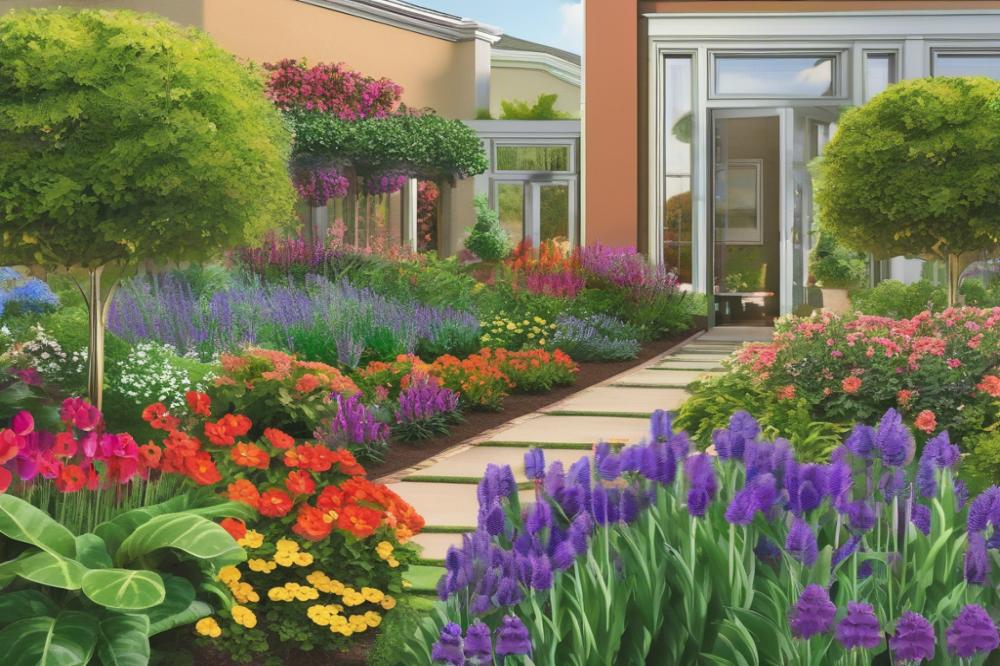

Overcrowded areas in a garden can lead to serious issues with plant health. When plants are too close together, they may create a damp environment. This increase in moisture is perfect for harmful pathogens. Fungi and bacteria thrive in these humid conditions. Plant diseases can spread quickly because of limited airflow. A single sick plant can infect its neighbors in no time.
Moreover, closely spaced plants compete for nutrients. Compromised soil health can weaken the plants. Weaker plants are more susceptible to diseases. Lack of sunlight further adds to this problem. Plants need a proper amount of light to thrive and fight off illnesses.
Improving plant spacing is vital in designing your garden. Proper arrangement helps keep plants healthier. Consider using companion planting as a strategy. Some plants can protect each other against pests and diseases when planted together. Crop rotation also plays a crucial role. Rotating crops prevents soil-borne diseases from accumulating in one area.
A well-thought-out garden design can promote biodiversity. Encouraging a variety of plants creates a balanced ecosystem. Healthy ecosystems tend to minimize the risk of disease. Consistent spacing around each plant allows them to grow robustly. This strong growth increases their resilience against threats.
For effective pest control, avoid planting in tight clusters. Spacing out plants allows for easier monitoring. When pests appear, it’s simpler to manage them. Healthy plant growth depends on smart planting choices. Aim for diversity and proper spacing to keep diseases at bay.
Encouraging Biodiversity
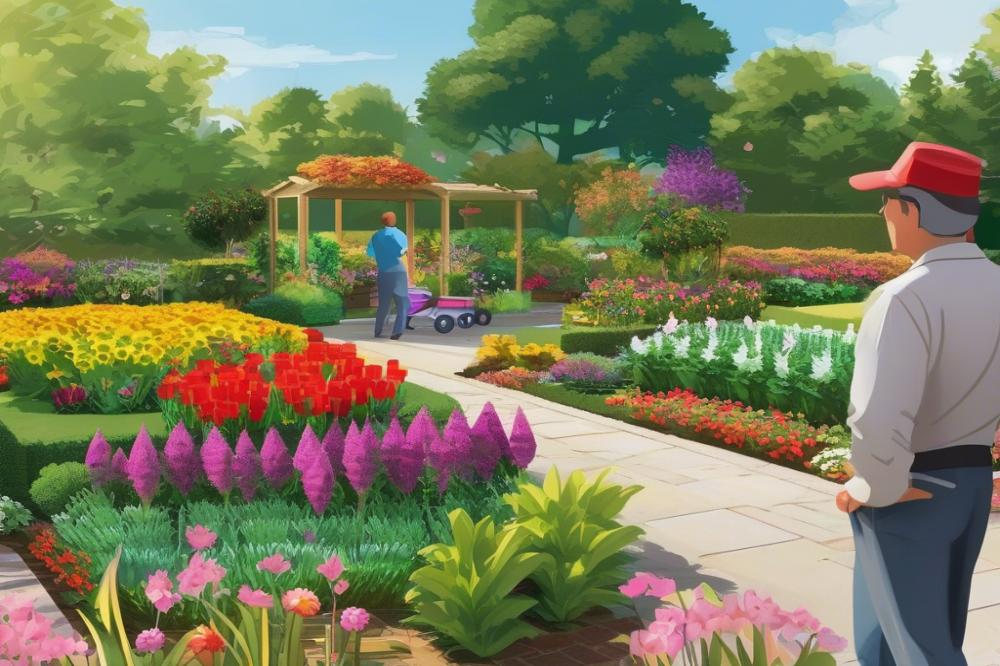

Biodiversity is crucial in maintaining a healthy ecosystem. A variety of plants can create a balanced environment that supports many forms of life. When you allow space for each plant to thrive, it encourages a wider range of species to exist together. This balance is vital for pest control.
Plant spacing contributes significantly to the overall health of your garden. Crowding plants can lead to weak growth, making them more vulnerable to diseases and pests. Instead, when you provide enough room, plants can grow strong and healthy, which naturally reduces the appeal for harmful insects.
Different plants serve various roles in creating a habitat that supports beneficial insects. For instance, certain flowers attract pollinators while others bring in predatory insects that keep pests in check. Companion planting is another strategy that enhances this diversity. By placing compatible plants together, you can further enhance pest resistance. These relationships help plants flourish without inviting unwanted visitors.
Crop rotation also plays a role in preserving soil health. Changing the type of plants in specific areas of your garden ensures that nutrients remain balanced. It can also interrupt the life cycles of insects that thrive in the same location. By varying what you grow, you create a mosaic of biodiversity that deters potential infestations.
Garden design should reflect these principles of diversity and spacing. Creating diverse layers with various heights can offer shelter for beneficial organisms. Such environments not only aid in pest control but also contribute to a more resilient garden. Heterogeneous setups make your garden more attractive and thriving.
By committing to this practice, you invite a myriad of beneficial life forms into your garden. Healthy ecosystems flourish through these interactions, promoting stability and sustainability. In doing so, you pave the way for productive plant growth, ultimately leading to a more vibrant and pest-free environment.
Companion Planting and Crop Rotation
Companion planting involves pairing different plants together to benefit one another. For instance, some plants repel pests that threaten their neighbors. This method not only helps in pest control but also enhances plant growth. When plants are strategically placed, they share resources effectively. This leads to improved soil health and can reduce plant diseases.
Crop rotation, on the other hand, is about changing the types of crops grown in specific areas each season. This technique prevents the depletion of soil nutrients and interrupts the life cycles of pests and diseases. By alternating crops, a gardener promotes biodiversity. Diverse plants can create a more balanced environment, reducing the chances of pest infestations.
Good garden design incorporates both companion planting and crop rotation. These methods help avoid the issue of overcrowding, allowing ample space for each plant to thrive. Proper plant spacing is crucial for maximizing growth. Adequate room between plants means that each one can access sunlight, water, and nutrients from the soil without competition.
This strategic approach leads to a healthier ecosystem overall. A well-planned garden using these techniques encourages strong plant defenses. Some plants contain natural compounds that repel insects, which benefits the entire garden. Improving plant health naturally reduces the reliance on chemical pest control methods.
In addition to pest resistance, companion planting can also aid in pollination. Flowers that attract beneficial insects can be placed near crops needing pollination. This not only improves yields but strengthens the connection within the ecosystem. By fostering a system where plants work together, gardeners can achieve thriving gardens that resist pests more effectively.
Designing a Healthy Garden
Creating a garden that thrives starts with effective design. One key aspect involves proper plant spacing. When plants are too close, they compete for resources like sunlight, water, and nutrients. This crowding can lead to weakened plants that are more susceptible to diseases and pests. Allowing adequate room not only promotes strong plant growth but also improves air circulation, crucial for preventing fungal infections.
Thoughtful plant selection is equally important. Choose plants that complement each other. For example, certain flowers can attract beneficial insects. This diversity enhances your garden’s biodiversity, which contributes to a healthier ecosystem. Additionally, some plants naturally repel pests when grown together. This strategy is known as companion planting, and it is effective for maintaining healthy plants while minimizing pest control issues.
Soil health matters. Amending your soil with organic matter can improve its structure and fertility. Healthy soil supports robust plants that can better withstand pressures from pests and diseases. Rotating crops each season can also nurture soil vitality. Different plants draw out various nutrients, ensuring the soil remains abundant for future growth.
Consider the layout of your garden as well. Rows, blocks, or mixed borders can all optimize space. While designing, think about the mature size of each plant. Choosing smaller varieties for front rows prevents overshadowing larger plants behind them. Such arrangements reduce competition, allowing each plant to flourish.
Finally, monitor the growth of your garden closely. Regularly check for signs of stress or pest infestations. Addressing issues early on can save plants from serious damage. A well-designed garden promotes resilience against diseases and pests, creating an enjoyable space for gardening enthusiasts.
Final Thoughts on Planting Smartly
Avoiding overcrowding in planting offers several key benefits for natural pest control. A well-spaced garden creates an environment where plants have room to grow. Improved air circulation reduces the chances of diseases spreading among plants. Healthy plants are typically more resilient against pests, and that’s crucial for any garden enthusiast.
The importance of plant spacing cannot be overstated. By providing each plant with adequate space, you allow them to thrive without competition for resources. This encourages vigorous growth, which in turn strengthens each plant’s immune system. Soil health greatly benefits from this setup. With less competition, the soil organisms have a better chance to exchange nutrients with the plants, creating a balanced ecosystem.
Biodiversity plays a significant role, too. Diverse plant life attracts beneficial insects, which serve as natural predators to pests. These insects help maintain a balanced garden ecosystem. A varied planting strategy can also confuse pests, making it harder for them to find their preferred targets.
Implementing these practices is not just beneficial; it’s essential for a successful garden. Not only do you foster a thriving environment, but you also contribute to a healthier ecosystem. Taking the time to space plants appropriately is a small effort that yields great results. In the end, remember that every garden is unique, and caring for it thoughtfully will always pay off.

